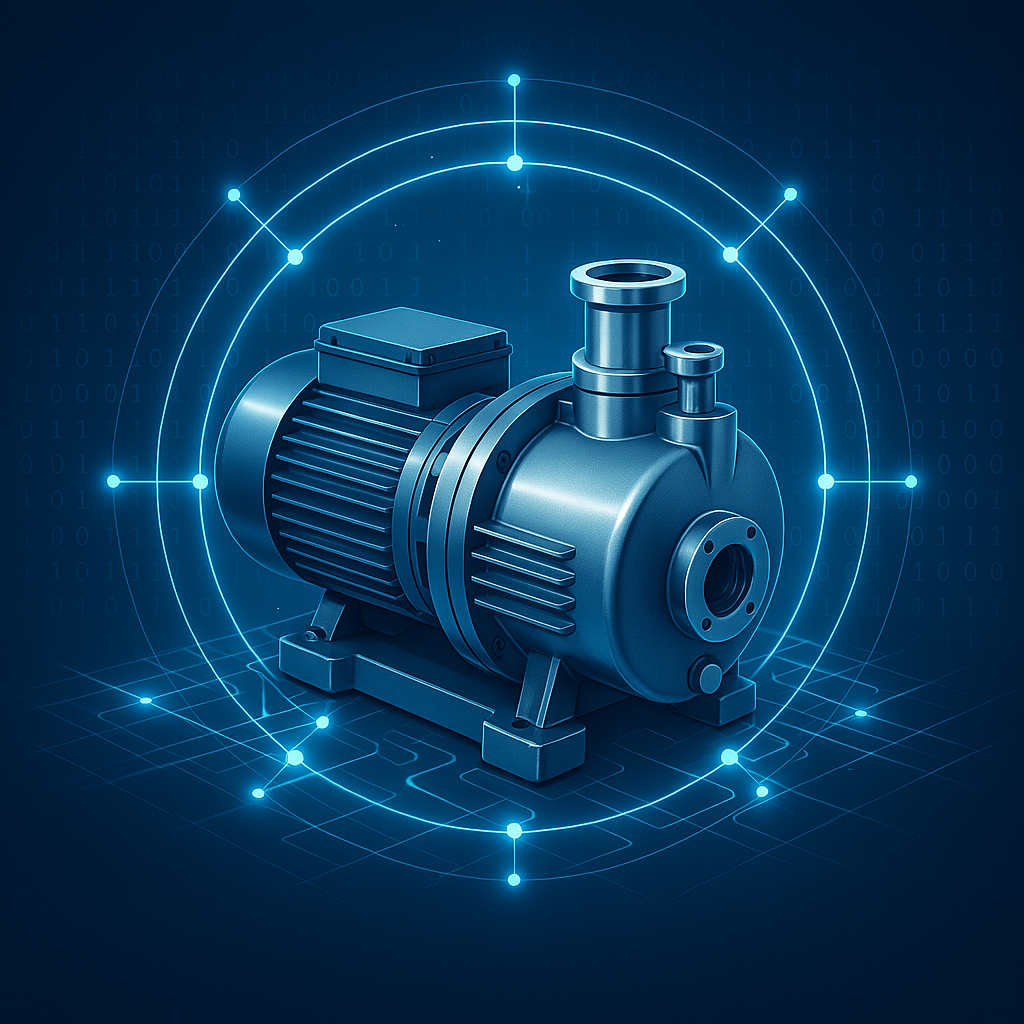In semiconductor manufacturing and other high-tech industries, vacuum pumps play a pivotal role in process stability, product quality, and operational efficiency. These mission-critical machines are responsible for maintaining controlled environments across a range of fabrication processes—from etching and deposition to wafer transfer. Yet, due to their continuous operation under extreme conditions, vacuum pumps are prone to wear, contamination, and unexpected failures. That’s where Vacuum Pump Monitoring Systems come into play—offering an intelligent, AI-powered solution to maintain reliability and maximize uptime.
From Reactive Repairs to Intelligent Monitoring
Traditional pump maintenance is often reactive, relying on fixed time intervals or responding only after issues occur. This reactive model not only causes unnecessary downtime but increases operational expenses over time. Modern fabs are shifting to Smart Predictive Maintenance strategies, using AI and data analytics to predict issues before they escalate.
Pump monitoring systems utilize sensors to track temperature, vibration, vacuum pressure, motor current, and other performance metrics in real time. This data is funneled through AI predictive analytics tools that detect anomalies, anticipate faults, and recommend interventions. Whether through edge computing or cloud-based platforms, the integration of AI for predictive maintenance is revolutionizing how manufacturers approach predictive maintenance for pumps.
One of the biggest advantages is transitioning from time-based servicing to condition-based maintenance, ensuring that servicing happens only when needed, based on actual wear and performance, rather than guesswork.
How Vacuum Pump Monitoring Systems Work
A modern vacuum pump monitoring system starts with IoT-enabled sensors mounted on or near the pump to collect operational data. These sensors are capable of detecting minute changes in vibration patterns, heat dissipation, or suction levels clues that often precede mechanical issues.
The data collected is transmitted to a central analytics engine, often integrated with a pump health monitoring system. This system applies AI predictive analytics tools and machine learning models to interpret trends, identify early signs of degradation, and evaluate remaining useful life (RUL). In parallel, motor health monitoring algorithms evaluate the integrity of the pump’s motor based on current draw and resistance fluctuations.
For example, if the vibration analysis detects a pattern consistent with bearing fatigue, the system can trigger an early alert, prompting inspection and targeted maintenance. These proactive insights help reduce unscheduled downtimes while extending the pump’s operational life.
Critically, the pump monitoring system is often tied into a larger Pump Control System or factory MES to initiate control actions, such as reducing load, redirecting vacuum distribution, or scheduling automated maintenance tasks.

AI, IoT, and Predictive Maintenance in Action
Thanks to predictive maintenance using IoT, facilities now operate with unprecedented transparency into their vacuum systems. AI-driven systems continuously learn from new data, improving accuracy over time and helping engineering teams make more informed decisions.
Use cases include:
- Detecting small leaks or vacuum loss before process impact
- Forecasting seal or rotor replacement timelines
- Optimizing energy usage by adjusting load in real time
- Analyzing start-stop behavior to prevent premature wear
And because this infrastructure can be scaled across the fab, facilities benefit from centralized pump health monitoring systems and performance dashboards that deliver insight across all pumps and vacuum modules in one view.
Through seamless communication with host software, alerts and performance reports can be accessed remotely. That’s particularly valuable for global facilities managing large fleets of pumps across shifts and geographies.
Benefits of a Modern Pump Monitoring System
Implementing an AI-enabled vacuum pump monitoring system delivers several key advantages:
- Increased uptime: Equipment failures are predicted and prevented.
- Lower maintenance costs: Servicing is done based on need, not time.
- Enhanced process stability: Vacuum consistency supports product quality.
- Improved safety: Early detection of pump issues minimizes the risk of catastrophic failure.
- Operational efficiency: Smart scheduling reduces manual inspections and emergency responses.
Moreover, when pumps are maintained proactively, their energy efficiency improves, which contributes to ESG goals and reduces the total cost of ownership.
Vacuum pumps may sit behind the scenes, but their performance defines the efficiency of critical manufacturing systems. As industries push for higher precision and zero downtime, deploying intelligent Vacuum Pump Monitoring Systems is no longer optional—it’s essential. With real-time diagnostics, AI-driven predictions, and seamless integration with pump control systems, these tools allow manufacturers to master smart predictive maintenance.
Through IoT connectivity, data science, and intelligent automation, pump monitoring systems represent the next leap in equipment health management. The message is clear: if your pumps aren’t being monitored, your uptime is being compromised.

